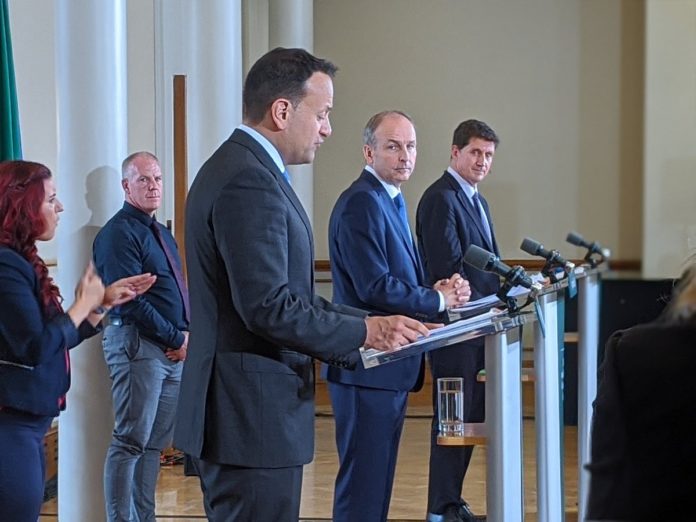
Opposition has grown in recent weeks to the State paying €800 million for a hospital that it will not own. At first, Ministers assured us that of course all procedures that are legal in the state will be able to take place in the new National Maternity Hospital. Then, as public opinion became too loud to ignore, Ministers started stuttering about how they too believe public hospitals should be publicly controlled (in an ideal world and probably not this time).
But this isn’t the first time that such an event has happened. So here’s our Top 5 examples of public funds being used for something that looks like a public service and then ends up in the control of a private organisation, usually the Catholic Church.
Enjoy.
Or cry.
1. The hospital you were born in

In fairness to St Vincent’s Healthcare Group, they probably thought that they could get massive public funding and then go ahead and do their own thing because … that’s how the system has worked for decades. Our public health system is a hybrid model; the HSE funds and owns one set of hospitals and funds but doesn’t own another set of hospitals. These so-called ‘voluntary hospitals’ account for 28% of in-patient beds in publicly funded acute hospital care. The 2017 Day report into the role of voluntary organisations in publicly funded health found that 12 of the 14 voluntary acute hospitals have ‘some degree of faith-based involvement in their governance arrangements’ and seven had ownership structures in which faith-based organisations played a role. Click this link to find out if the hospital that you or your family need for medical care is one of them.
2. The social care you rely on

The public also funds other social services like disability, rehabilitation, and mental health services, including funding the purchase of capital assets. But because of the way the State has contracted the services out to private organisations (many of whom, you guessed it, are faith-based) that doesn’t mean the public owns those assets. Since 2005 the HSE’s own rules have said that when the HSE is funding capital assets for voluntary organisations it should enter into an agreement that the building will be used for the agreed purpose and that it won’t be sold or used as security on a mortgage. The HSE told the Day Report that it holds a charge on all capital assets that it funds but as of 2017 it didn’t have a list of all the assets it held a charge against.
3. Your home

The State’s refusal to build homes while at the same time throwing buckets of public money at private landlords through HAP is well-known. What’s less well-known is the Enhanced Long Term Social Housing Leasing Scheme, perhaps because the name doesn’t fit easily on a placard. Under the scheme, local authorities enter 25 year leases with private landlords that have at least 20 units. Rents are fixed at 95% of market rate, with reviews every three years linked to consumer prices. And at the end of the 25 years the local authority doesn’t even have the option to buy the home that it has spent a generation paying for.
4. The office you walk by

It’s a similar situation when it comes to office accommodation for the civil service, which is the responsibility of the Office of Public Works. The OPW owns 60% of its accommodation and leases the other 40%. And that 40% doesn’t represent once-off, short-lived accommodation needs like a Tribunal or an Inquest that will only last a few years. No, instead of building accommodation to suit its long-term needs, the OPW spends millions fitting out, renting, then restoring buildings, like the office on Baggott Street it organised for the Department of Health and the Department of Children and Youth Affairs, which has a rental cost of €10 million every year for 25 years.
5. Your primary school (probably)

The State doesn’t just pay the teachers and SNAs who work in our schools, it also provides funding to build new schools and to upgrade facilities. In fact, in 2018 the National Development Plan announced that €8.4 billion would be spent on school buildings in the decade to 2027 (it probably requires more than that). Yet even though the public funds what we think of as public education, we don’t control education, the private – mostly religious – organisations do. And that impacts what students learn, how students are treated, and how their teachers are treated.
Are there any other truly depressing examples that we missed? Let us know on Facebook, Twitter, or Instagram.




